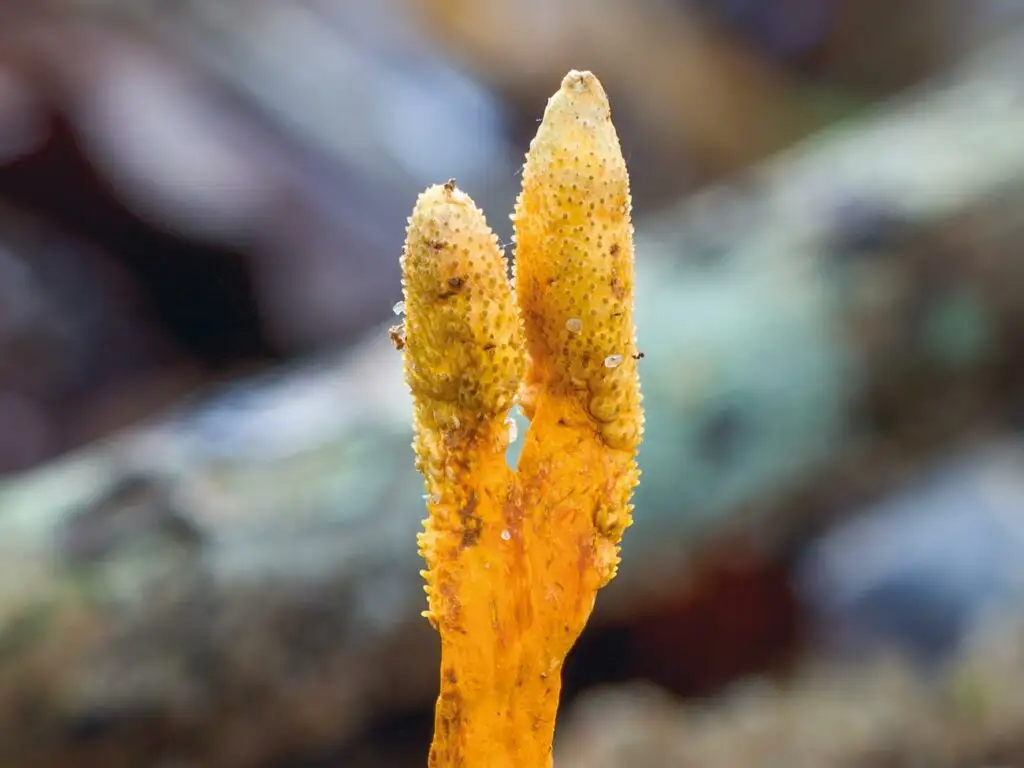Cordyceps sinensis
Latin Name: Cordyceps sinensis
Herb Class/Action: Adaptogen, Qi Tonic, Kidney Tonic
Parts Used: Fruiting body, body, mycelium
Flavors: Sweet, slightly bitter and acrid
Energetics: Warming
Traditional Benefits: Adrenal support, immune support, kidney support, Jing support, lung support, energy support, spirit support
Cordyceps is an adaptogenic fungi, considered a “fu zheng” herb in Traditional Chinese Medicine, which refers to nourishing tonics that aid in supporting balanced immune and adrenal health.*
Cordyceps are probably the strangest of all “herbs” regularly used in traditional medicine. This immune-nourishing tool is actually a form of fungi, which includes about 600 species and ranges in appearance from bright orange all the way to dark and stormy. What’s most strange (and fascinating) about Cordyceps is not what they look like, but how they grow.
Cordyceps’ Chinese name is dong chong xia cao, which translates to “winter insect, summer herb.” While that might sound metaphorical, it’s actually a pretty literal description of this fungi. The Cordyceps fungi attack a host—most commonly an insect, but sometimes spiders and mushrooms—essentially mummifying the body through mycelia growth in order to produce fruiting bodies. An absolutely wild process, resulting in a wildly powerful, healing tool from nature.

Native to the Himalayas, Cordyceps were traditionally used by the elite ruling class to enhance longevity and strengthen the body’s Qi. In Chinese medicine, they’re considered a fu zheng herb—nourishing the kidneys and strengthening the kidney’s yin, yang, and essence equally.*
Modern herbalists consider Cordyceps an important adaptogen, using the herb for a number of vital functions. Interestingly, Cordyceps produces a fruiting body that contains beta-glucans—a type of polysaccharide known to support immune health and overall wellness. It supports healthy stamina and energy levels, helps aid immune system function, promotes overall endocrine health, aids in liver and kidney health, functions as an antioxidant and adrenal-supporter to promote a healthy stress response.*
Cordyceps’ Chinese name is dong chong xia cao, which translates to “winter insect, summer herb.” Appropriate, considering these fungi transform an insect into a valuable mycelium + fruiting body that we now use as an important herbal tool.

